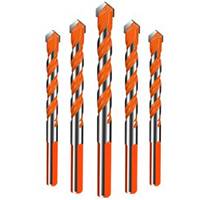- Industrial zone, South of Anping Town, Hengshui, Hebei, China.
- sales@hfpetromesh.com
- +86-18931809706
 Afrikaans
Afrikaans  Albanian
Albanian  Amharic
Amharic  Arabic
Arabic  Armenian
Armenian  Azerbaijani
Azerbaijani  Basque
Basque  Belarusian
Belarusian  Bengali
Bengali  Bosnian
Bosnian  Bulgarian
Bulgarian  Catalan
Catalan  Cebuano
Cebuano  Corsican
Corsican  Croatian
Croatian  Czech
Czech  Danish
Danish  Dutch
Dutch  English
English  Esperanto
Esperanto  Estonian
Estonian  Finnish
Finnish  French
French  Frisian
Frisian  Galician
Galician  Georgian
Georgian  German
German  Greek
Greek  Gujarati
Gujarati  Haitian Creole
Haitian Creole  hausa
hausa  hawaiian
hawaiian  Hebrew
Hebrew  Hindi
Hindi  Miao
Miao  Hungarian
Hungarian  Icelandic
Icelandic  igbo
igbo  Indonesian
Indonesian  irish
irish  Italian
Italian  Japanese
Japanese  Javanese
Javanese  Kannada
Kannada  kazakh
kazakh  Khmer
Khmer  Rwandese
Rwandese  Korean
Korean  Kurdish
Kurdish  Kyrgyz
Kyrgyz  Lao
Lao  Latin
Latin  Latvian
Latvian  Lithuanian
Lithuanian  Luxembourgish
Luxembourgish  Macedonian
Macedonian  Malgashi
Malgashi  Malay
Malay  Malayalam
Malayalam  Maltese
Maltese  Maori
Maori  Marathi
Marathi  Mongolian
Mongolian  Myanmar
Myanmar  Nepali
Nepali  Norwegian
Norwegian  Norwegian
Norwegian  Occitan
Occitan  Pashto
Pashto  Persian
Persian  Polish
Polish  Portuguese
Portuguese  Punjabi
Punjabi  Romanian
Romanian  Russian
Russian  Samoan
Samoan  Scottish Gaelic
Scottish Gaelic  Serbian
Serbian  Sesotho
Sesotho  Shona
Shona  Sindhi
Sindhi  Sinhala
Sinhala  Slovak
Slovak  Slovenian
Slovenian  Somali
Somali  Spanish
Spanish  Sundanese
Sundanese  Swahili
Swahili  Swedish
Swedish  Tagalog
Tagalog  Tajik
Tajik  Tamil
Tamil  Tatar
Tatar  Telugu
Telugu  Thai
Thai  Turkish
Turkish  Turkmen
Turkmen  Ukrainian
Ukrainian  Urdu
Urdu  Uighur
Uighur  Uzbek
Uzbek  Vietnamese
Vietnamese  Welsh
Welsh  Bantu
Bantu  Yiddish
Yiddish  Yoruba
Yoruba  Zulu
Zulu
- Afrikaans
- Albanian
- Amharic
- Arabic
- Armenian
- Azerbaijani
- Basque
- Belarusian
- Bengali
- Bosnian
- Bulgarian
- Catalan
- Cebuano
- Corsican
- Croatian
- Czech
- Danish
- Dutch
- English
- Esperanto
- Estonian
- Finnish
- French
- Frisian
- Galician
- Georgian
- German
- Greek
- Gujarati
- Haitian Creole
- hausa
- hawaiian
- Hebrew
- Hindi
- Miao
- Hungarian
- Icelandic
- igbo
- Indonesian
- irish
- Italian
- Japanese
- Javanese
- Kannada
- kazakh
- Khmer
- Rwandese
- Korean
- Kurdish
- Kyrgyz
- Lao
- Latin
- Latvian
- Lithuanian
- Luxembourgish
- Macedonian
- Malgashi
- Malay
- Malayalam
- Maltese
- Maori
- Marathi
- Mongolian
- Myanmar
- Nepali
- Norwegian
- Norwegian
- Occitan
- Pashto
- Persian
- Polish
- Portuguese
- Punjabi
- Romanian
- Russian
- Samoan
- Scottish Gaelic
- Serbian
- Sesotho
- Shona
- Sindhi
- Sinhala
- Slovak
- Slovenian
- Somali
- Spanish
- Sundanese
- Swahili
- Swedish
- Tagalog
- Tajik
- Tamil
- Tatar
- Telugu
- Thai
- Turkish
- Turkmen
- Ukrainian
- Urdu
- Uighur
- Uzbek
- Vietnamese
- Welsh
- Bantu
- Yiddish
- Yoruba
- Zulu
bar grating prices
Understanding Bar Grating Prices Factors and Trends
Bar grating is an essential component widely used in various industries, providing functional platforms and safety features in industrial settings, commercial buildings, and even residential projects. The prices of bar grating can vary significantly based on numerous factors, including material type, manufacturing process, and even market demand trends. This article delves into these factors to provide a comprehensive understanding of bar grating prices.
Material Types
One of the primary contributors to the pricing of bar grating is the type of material used. Common materials include steel, aluminum, and fiberglass, each possessing unique characteristics and cost implications.
1. Steel Grating Often the most economical option, steel grating is durable and strong, making it ideal for heavy-duty applications. The prices can fluctuate based on the quality of steel, galvanization processes, and current steel market prices.
2. Aluminum Grating While it tends to be more expensive than steel, aluminum is lightweight, resistant to corrosion, and suitable for environments where weight is a concern. Its price is influenced by aluminum market dynamics, which can be volatile.
3. Fiberglass Grating This type is favored in environments prone to corrosive elements. While it is generally the most expensive option, it offers significant longevity and maintenance savings, especially in specialized applications.
Manufacturing Processes
bar grating prices

The manufacturing process also plays a crucial role in determining bar grating prices. The primary methods include welded, press-locked, and riveted grating.
- Welded Grating Typically more robust and durable, welded gratings can be priced higher due to the labor-intensive process involved in their production.
- Press-Locked Grating This method tends to be more cost-effective and provides a good balance of strength and price. However, it may not feature the same level of durability as welded variants.
- Riveted Grating Often used for specialized applications, riveted grating may carry higher costs due to its unique design and manufacturing requirements.
Market Demand and Economic Factors
The demand for bar grating is subject to broader economic factors, such as construction activity, industrial production levels, and even seasonal variances. Economic growth can spur demand for materials like bar grating as construction projects increase. Conversely, in times of economic downturn, demand may decline, potentially resulting in lower prices.
Conclusion
In summary, the prices of bar grating are influenced by a confluence of factors including material choice, manufacturing processes, and economic conditions. Buyers should conduct thorough market research and consider their specific needs when selecting bar grating types. Understanding these elements can help in making informed decisions, ensuring that projects meet safety and functionality standards while staying within budget. With the right knowledge, businesses can navigate the bar grating market effectively, securing the best products for their operational needs.
-
Welded Steel Bar Grating: The Rugged Industrial Flooring Solution Built for Load and LongevityNewsJun.24,2025
-
Steel Walkway Grating: Reliable, Resilient, and Built for Every StepNewsJun.24,2025
-
Shale Shaker Screen for Sale: Optimize Drilling Efficiency with Precision Screening PowerNewsJun.24,2025
-
Shaker Screen for Sale: Elevate Your Drilling Efficiency with Durable Separation SolutionsNewsJun.24,2025
-
Press Locked Steel Grating: Industrial Strength with Precision Fit for Heavy-Duty ApplicationsNewsJun.24,2025
-
Perimeter Safety Netting: The Critical Safety Upgrade for Every HelipadNewsJun.24,2025